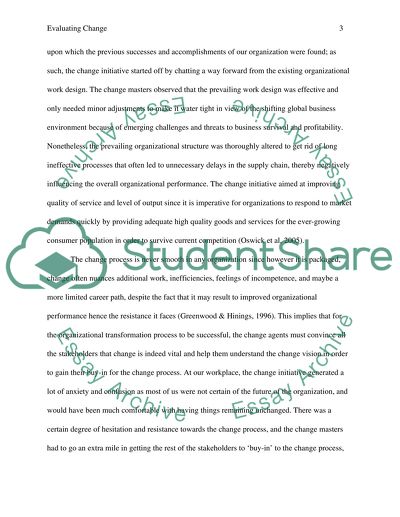Cite this document
(“Evaluating Change Essay Example | Topics and Well Written Essays - 1250 words - 1”, n.d.)
Retrieved from https://studentshare.org/education/1626693-evaluating-change
Retrieved from https://studentshare.org/education/1626693-evaluating-change
(Evaluating Change Essay Example | Topics and Well Written Essays - 1250 Words - 1)
https://studentshare.org/education/1626693-evaluating-change.
https://studentshare.org/education/1626693-evaluating-change.
“Evaluating Change Essay Example | Topics and Well Written Essays - 1250 Words - 1”, n.d. https://studentshare.org/education/1626693-evaluating-change.


